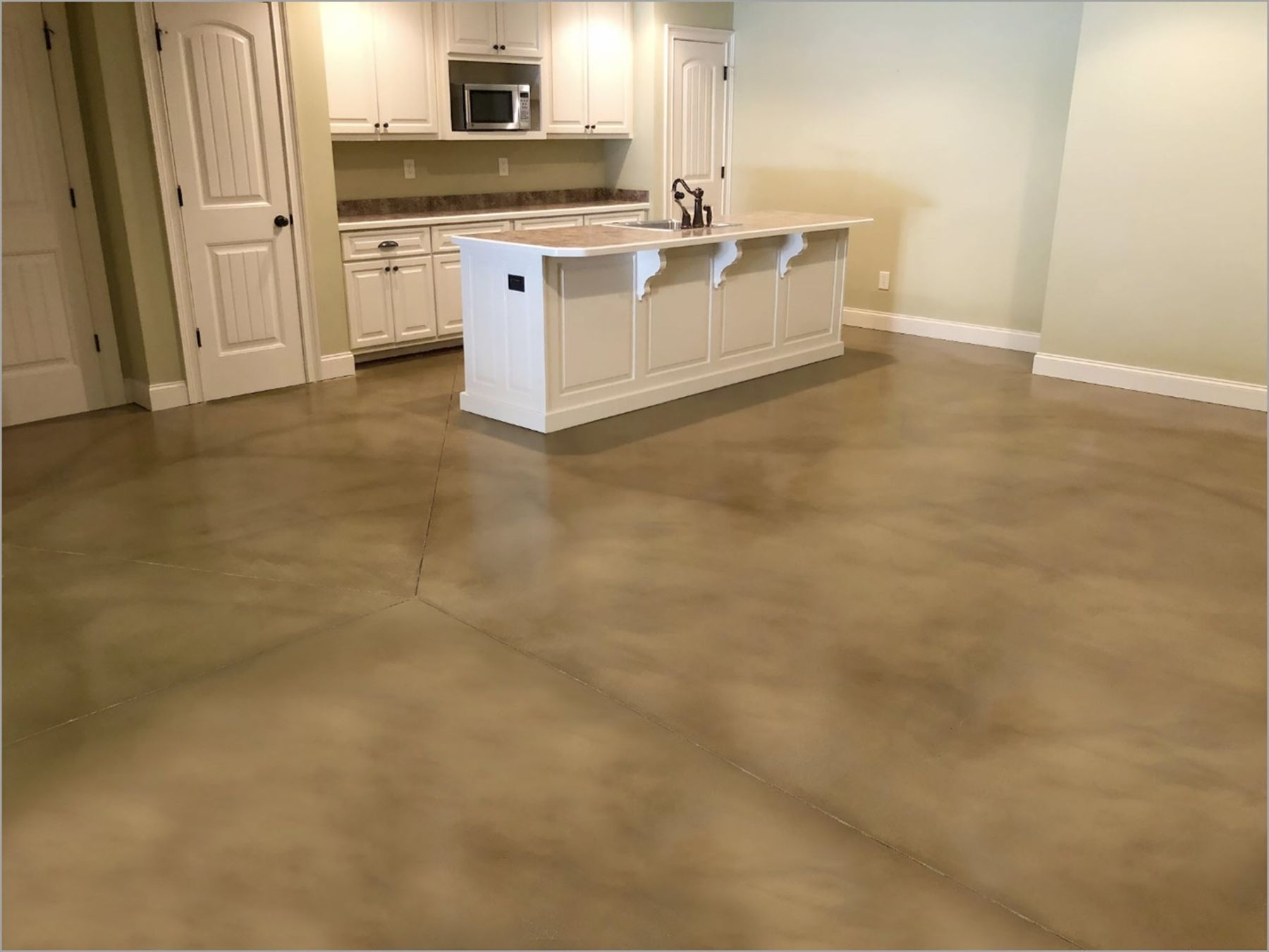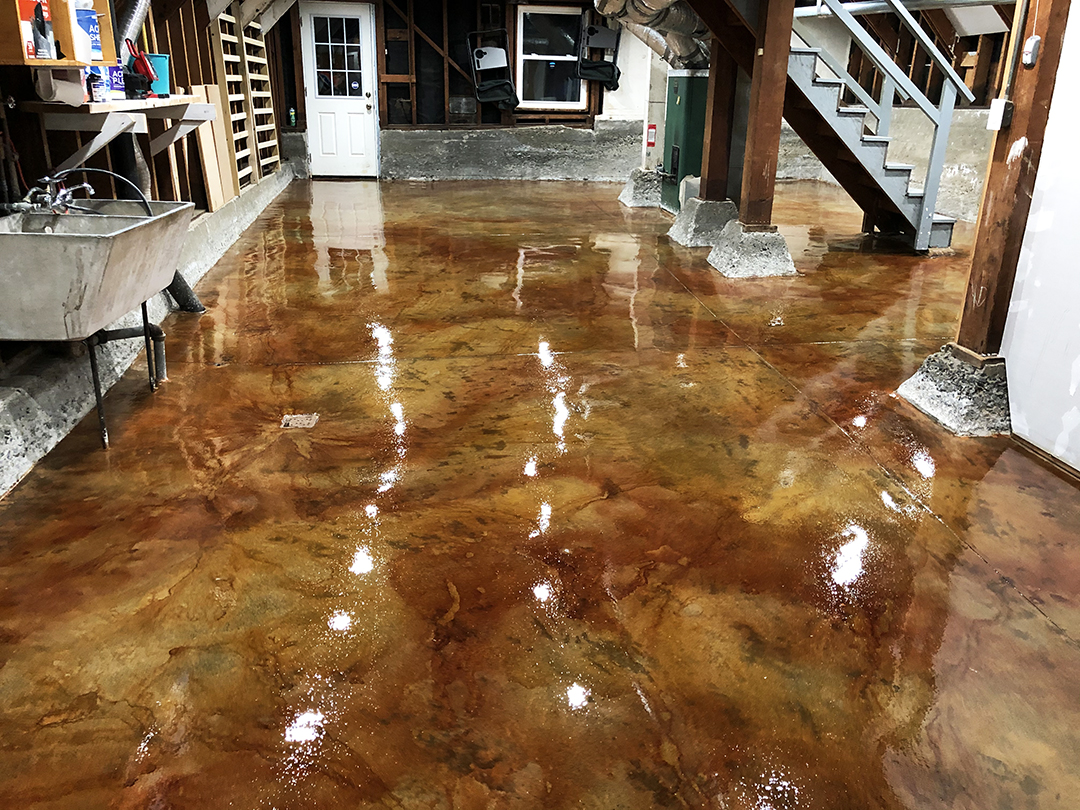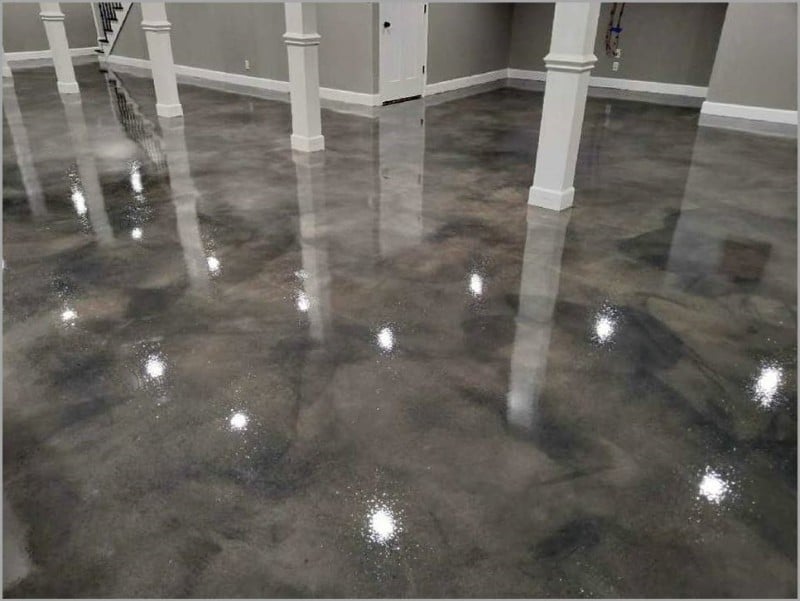Why hiring stained concrete contractors is the best move for long-lasting results
All Concerning Stained Concrete: A Comprehensive Guide to Its Advantages and Applications
Stained concrete has actually become a popular option for both household and industrial spaces. Its capability to combine visual appeal with practicality makes it a fascinating option. Numerous discoloration methods provide an array of shades and surfaces, enabling customization. The advantages extend past look. Recognizing its applications and upkeep needs is important for anyone considering this flexible product. The subtleties of stained concrete welcome further expedition.
What Is Stained Concrete?

Staining can be put on different surface areas, consisting of floorings, driveways, and outdoor patios, making it a versatile option for both indoor and exterior areas. The therapy can achieve an array of looks, from natural tones to vibrant, modern styles. Unlike paint, stained concrete keeps its appearance over time, as it becomes an indispensable component of the concrete itself. On the whole, stained concrete acts as a reliable approach for changing common concrete into visually striking surfaces.
Advantages of Stained Concrete
Stained concrete offers considerable benefits, particularly in aesthetic charm and resilience - local stained concrete. Its lively shades and distinct patterns enhance the visual beauty of any type of room, making it a prominent choice for both domestic and industrial applications. Furthermore, the longevity of stained concrete assurances that it continues to be a useful financial investment with time, withstanding wear and tear
Aesthetic Allure
Among one of the most compelling advantages of making use of stained concrete is its exceptional visual allure. Stained concrete offers an unique and functional appearance that can match different design styles, from contemporary to rustic. The mixture of lively colors and elaborate patterns enables home owners and developers to produce tailored surface areas that can enhance the total ambiance of an area. Unlike typical floor covering alternatives, stained concrete can resemble the appearance of natural stone or sleek marble, giving an upscale look without the associated costs. Furthermore, the glossy finish alternatives can show light, more brightening interiors. This versatility makes stained concrete a preferred option for both household and industrial applications, where visual impact is vital.
Sturdiness and Long life
The outstanding visual high qualities of stained concrete are complemented by its amazing sturdiness and long life - stained concrete floors. Stained concrete surface areas are immune to damage, making them appropriate for high-traffic locations both indoors and outdoors. Their durable nature implies they can stand up to rough climate condition, including severe temperature levels, rain, and UV exposure, without considerable destruction. In addition, stained concrete calls for marginal maintenance compared to various other floor covering choices, as it does not require constant securing or refinishing. This longevity not only reduces replacement expenses yet likewise adds to a sustainable structure strategy. In general, stained concrete supplies an enduring service that integrates aesthetic appeal with functional advantages, guaranteeing its worth with time
Various Kinds Of Staining Methods
Different discoloration strategies can noticeably influence the visual top qualities of concrete surfaces. The 3 primary techniques include acid discoloration, which responds chemically with the concrete, water-based staining, which supplies a wider series of shades, and overlay staining choices that offer a fresh surface. Each technique has distinct features and applications that cater to different design preferences and job requirements.
Acid Discoloration Method
Just how can house owners change simple concrete surface areas into aesthetically striking attributes? One effective method is acid staining, a popular method that improves the all-natural charm of concrete. This process entails using a solution of water, hydrochloric acid, and metal salts to the concrete surface area. As the acid reacts with the lime present in the concrete, it produces rich, variegated colors that resemble marble or rock. Acid discoloration is known for its resilience and resistance to fading, making it a resilient choice for both indoor and outside applications. However, it is vital to keep in mind that the results can vary based on the initial concrete color and appearance - stained concrete floors. Appropriate application and sealing are essential for attaining the desired aesthetic and long life
Water-Based Staining Strategy
A prominent option to acid discoloration, the water-based discoloration method offers property owners a functional method to improve concrete surface areas. This method utilizes water-soluble dyes and pigments, enabling a vast array of shades and surfaces. Unlike acid stains, water-based discolorations can be related to unsealed concrete and supply an easier clean-up process. The results can accomplish a much more uniform look and can be layered to develop one-of-a-kind results. Furthermore, water-based discolorations are usually less toxic and produce less unstable organic compounds (VOCs), making them extra environmentally friendly. Property owners may value the ability to tailor their concrete surfaces with various shades, permitting imaginative expression while preserving sturdiness and durability in their flooring selections.
Overlay Staining Options
Countless overlay discoloration alternatives exist for house owners aiming to rejuvenate their concrete surface areas. One preferred option is acid discoloration, which responds chemically with the concrete to produce rich, variegated shades. Another option is water-based staining, providing a broader shade palette and less complicated application. Furthermore, concrete overlays can be integrated with patterns great post to read for intricate designs, enhancing aesthetics. For a much more textured coating, homeowners may consider making use of stamped overlays that resemble natural materials like rock or tile. Each method gives unique advantages, from sturdiness to personalization, permitting an individualized touch. Ultimately, the selection of overlay discoloration depends on the preferred appearance and the condition of the existing concrete, making sure a rejuvenated and enticing surface area.
Applications of Stained Concrete
Stained concrete deals a functional solution for various applications, boosting both aesthetic allure and capability. This product is generally used in household, industrial, and commercial setups, making it a preferred selection amongst architects and developers. In homes, stained concrete can function as fashionable floor covering or outside patios, giving an advanced appearance while remaining sturdy.
In industrial spaces, such as retailers and dining establishments, stained concrete adds to a contemporary setting and can stand up to hefty foot website traffic. Additionally, stained concrete is progressively used in public spaces like parks and pathways, where its capacity to mimic natural stone or various other products adds aesthetic rate of interest.
Stained concrete is ideal for swimming pool decks and driveways, offering a slip-resistant surface that is simple to maintain. In general, the flexibility of stained concrete makes it ideal for countless environments, satisfying varied tastes and needs.
Upkeep and Take Care Of Stained Concrete
Correct maintenance assures the durability and beauty of stained concrete surface areas. Routine cleansing is crucial; using a moderate detergent and water with a soft-bristle brush assists remove dust and grime without harming the coating. It is recommended to avoid rough chemicals that can remove the stain or sealant.
Securing stained concrete is vital for defense versus wetness, discolorations, and use. A premium sealer should be reapplied each to 3 years, depending upon the website traffic and exposure the surface endures. Additionally, attending to spills immediately will stop staining and staining.

Expense Factors To Consider for Stained Concrete Projects
When intending a tarnished concrete project, spending plan considerations play a vital duty in determining the general price. The costs connected with stained concrete can vary substantially based on numerous aspects. First, the size of the area to be stained straight influences material and labor prices. Larger areas will normally need even more sources. Second, the type of tarnish chosen-- acid-based or water-based-- can impact pricing, with acid discolorations usually being a lot more pricey. Furthermore, the intricacy of the layout, consisting of patterns or several colors, can increase labor costs. Preparation work, such as cleaning and grinding the concrete surface, includes in the initial expenditures too. The selection in between DIY installment and hiring a professional specialist will certainly additionally affect the budget plan. Comprehending these elements makes it possible for homeowners to make informed financial decisions concerning their stained concrete tasks, guaranteeing they attain the wanted aesthetic within their financial methods.
Tips for Picking the Right Stained Concrete for Your Area
Choosing the best stained concrete for a particular room includes mindful consideration of different factors beyond just budget. One should examine the designated usage of the area. High-traffic zones might call for more resilient finishes, while attractive applications can focus on aesthetic appeals.
The color palette is one more essential aspect; the chosen colors ought to balance with existing style and lighting. It's additionally essential to take into account the surface area appearance, as smooth finishes can improve sophistication, while textured choices might guarantee security in damp locations.
Local environment and ecological conditions play a substantial duty in the long life and maintenance of stained concrete, affecting the choice of sealers and finishes.
Finally, speaking with experts can provide useful understandings customized to specific requirements, assuring the option of the excellent stained concrete that straightens with both performance and style.

Often Asked Inquiries
Can Stained Concrete Be Applied Over Existing Flooring?
Stained concrete can undoubtedly be applied over existing floor covering, offered the surface area is stable and appropriately prepared. This approach permits a visual upgrade without the need for full elimination of the initial floor linked here covering materials.
The Length Of Time Does Stained Concrete Last?
Stained concrete can last for decades when properly kept. Variables such as website traffic, environmental problems, and application strategies considerably affect its longevity, with lots of installations continuing to be vivid and intact for 10 to thirty years.
Is Stained Concrete Slippery When Damp?
Stained concrete can be unsafe when damp, as the surface might create a smooth surface area. Making use of non-slip additives or textured finishes can mitigate this concern, enhancing security without jeopardizing the visual allure of the concrete.
Can I Discolor Concrete Myself, or Should I Employ a Specialist?
The decision to discolor concrete directly or employ an expert joints on ability level and job complexity. While DIY staining can conserve cash, experts assure suitable results, particularly for detailed designs or see post huge surfaces.
What Colors Are Readily Available for Stained Concrete?
The variety of shades readily available for stained concrete includes natural tones like browns and tans, dynamic shades such as reds and blues, and softer hues like pastels. This palette enables for creative, personalized style alternatives.